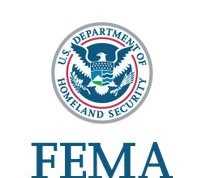When Is a Landlord Liable for Tenant Injuries?
Real estate owners aren’t just responsible for collecting your rent check every month. They’re also responsible for making sure the property you lease is safe for living or work. If a tenant is injured, the landlord may be liable for the cause.
In the event that you or a visitor to the property is injured due to an unsafe situation created or neglected by the landlord, you may be entitled to compensation for your medical bills and other expenses. But, landlord tenant laws can be tricky to know when a landlord has liability for tenant injuries and when the responsibility falls to you.
Negligence
If your landlord had a duty of care to you or a guest, he or she may be found negligent. Many landlord liability cases arise from negligence, which, in general, means that the landlord knew there was a dangerous condition but took no action to remedy it. Negligence can also apply to the foreseeability of an accident and the knowledge of a hidden danger. Examples of negligence include the following:
- If there is a broken step in a common area that is supposed to be maintained by the landlord, but the landlord does nothing to repair the condition, they are considered negligent for having control over a dangerous situation.
- When a basement door is covered by a rug that could pose a falling threat and the landlord knows about the door and does not warn tenants about it, they could be considered negligent for knowing about a hidden danger.
- The presence of a loose railing on a common balcony, and the landlord does not repair it or block off the use of that balcony until it’s fixed, they could be seen as negligent for not taking action to prevent a dangerous situation (foreseeability of an accident).
Factors in Determining Liability
In the event that a landlord is not determined to be obviously negligent by the courts, there is still a possibility that he or she could be found liable for an injury anyway. For instance, if the courts determine that the injury could have been prevented with a simple and reasonably priced solution, whether or not the landlord could foresee an injury, he or she may still be found negligent.
An example of this would be painting a bright stripe on an unexpected step up to a rental property communal patio to make sure tenants know the step is there.
The degree of injury is also a factor in determining liability. The courts require a landlord to immediately remedy a situation that would likely result in a serious injury, such as rotted support beams that are holding up a deck.
Of course, if the landlord knows about these rotted support beams, they can also reasonably foresee an injury, so this would definitely fall under negligence if the landlord failed to fix the beams as quickly as possible. Additionally, the landlord must also take measures to keep people from using the deck until it’s repaired.
Conclusion
Landlords do enjoy quite a bit of latitude in the eyes of the court when determining negligence. Landlords can be held liable for their tenants’ injuries. However, tenants must prove that their injuries are the result of the landlord’s carelessness and nothing else. This can be a high standard to attain, so if you’ve suffered an injury at your home or place of work and you believe it’s due to landlord negligence, you’ll want to work with an attorney who has experience recovering damages.















